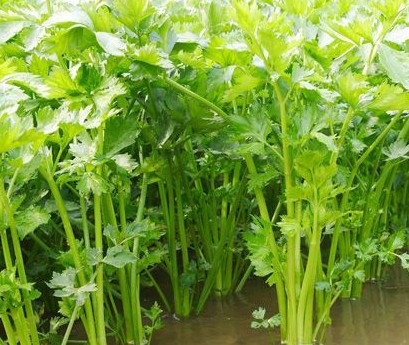How to keep the seed of conventional celery?
[abstract] in recent years, some excellent conventional varieties of celery have been cultivated in many places, which also account for a large proportion in planting. In view of the fact that celery is a cross-pollinated crop, conventional improved varieties should especially do a good job in seed retention and degradation prevention, establish a good seed field or seed base, and select good seed plants.

No other celery varieties can be planted within at least 4000 meters of the reserved field. In general, special topography such as lake island, secluded land or forest belt are used as natural isolation shielding to establish breeding land or small area breeding base.
There are two seed collection methods of celery: large plant seed collection method and small plant seed collection method.
The large plant seed collection method is also called the adult plant seed collection method or the old root seed collection method. Before the harvest of commercial celery in winter, the excellent single plant which can represent the typical characteristics of this variety was selected as the remaining plant in autumn planting celery field. When a small number of seeds are retained, the selected excellent individual plants can also be transplanted to the reserved seed land, and the selected plants can be selected in early spring, that is, the plants that are early bolting, cold-tolerant and susceptible can be eliminated. Attention should be paid to watering and fertilizing after flowering. The flowering period of celery is long and the seed ripening period is different. In order to ensure the seed quality, it is best to harvest in stages and batches. Generally, per mu of reserved land can produce 75kg of seeds. When the large plant seed collection method is adopted, the commercial characters and cold tolerance of the plant can be selected, and the deterioration of the variety can be prevented in a certain procedure. Therefore, this method is more suitable for the purification and rejuvenation of local celery varieties.
The small plant seed collection method sows and collects seeds in the same year, or cultivates seedlings before winter, and then sets them to plant and leave seeds in the next spring, then let them sprout, blossom and bear fruit, and then collect seeds. Although the cost of seed collection is small, the seed and plant can not be strictly selected, and it is easy to cause variety degradation when it is used year after year, so it is mostly used for breeding and production of excellent new varieties at the beginning of popularization. The method of collecting seeds from small plants is the key to grasp the appropriate sowing date. It is usually broadcast live in the open field around late February. If sowing is too late, the seedling can not pass the low temperature vernalization stage, and the seed plant can not smoothly bolt and blossom; but if sowing too early, the seedling is very small through the vernalization stage, bolting and flowering, the vegetative growth period is too short, and the accumulated nutrients are too little, resulting in low seed yield. When using the small plant seed collection method, because the plant is small and the branching ability of the seed plant is not strong after bolting, so the fixed value density is denser than that of the larger plant, usually the row spacing is 20 cm × 50 cm, and 2 plants are planted in each hole. Other cultivation and management techniques and seed harvesting methods are the same as those of large plants.
Related
- Fuxing push coffee new agricultural production and marketing class: lack of small-scale processing plants
- Jujube rice field leisure farm deep ploughing Yilan for five years to create a space for organic food and play
- Nongyu Farm-A trial of organic papaya for brave women with advanced technology
- Four points for attention in the prevention and control of diseases and insect pests of edible fungi
- How to add nutrient solution to Edible Fungi
- Is there any good way to control edible fungus mites?
- Open Inoculation Technology of Edible Fungi
- Is there any clever way to use fertilizer for edible fungus in winter?
- What agents are used to kill the pathogens of edible fungi in the mushroom shed?
- Rapid drying of Edible Fungi



